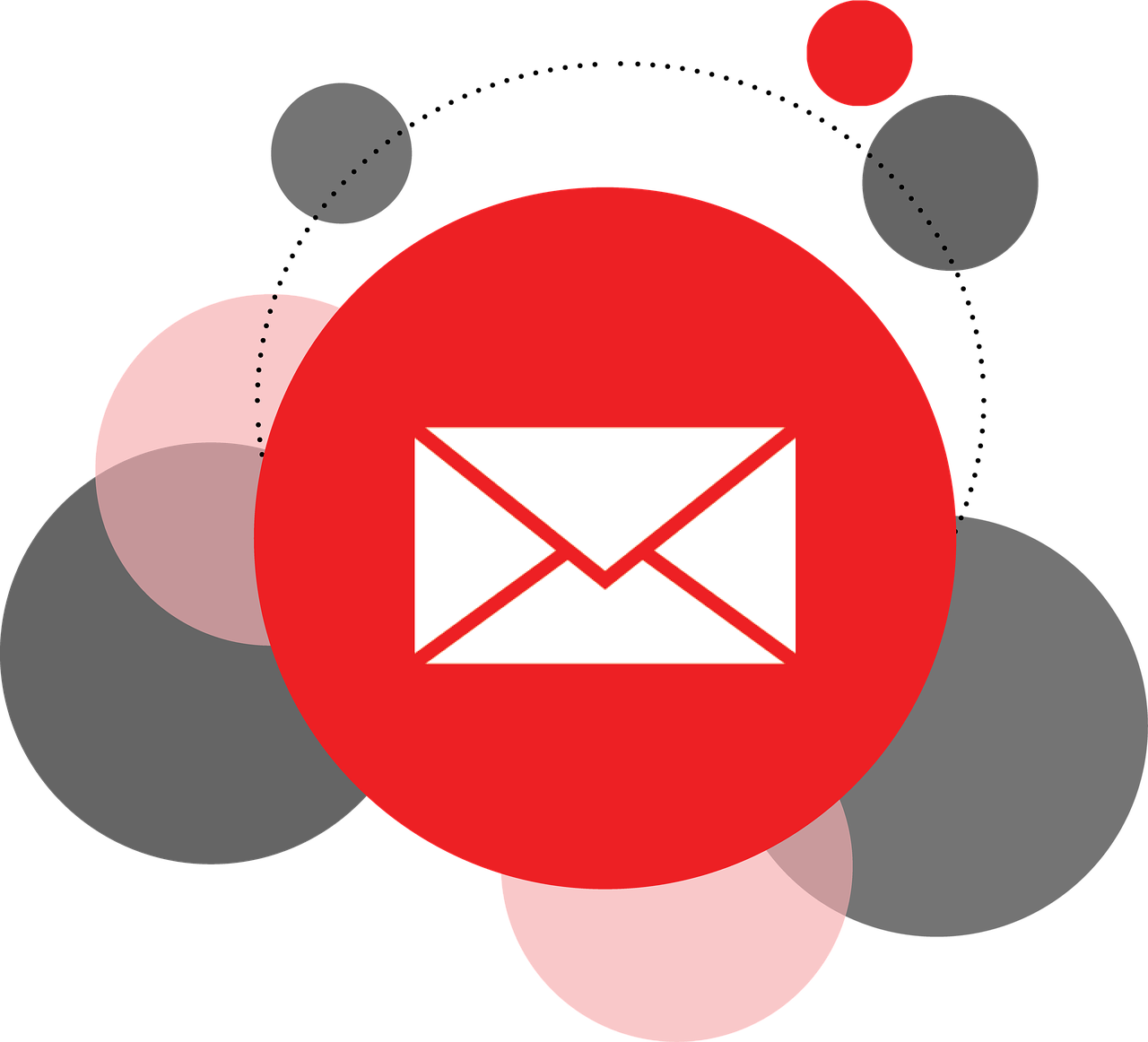Email marketing
Email marketing, at its core, involves conducting marketing activities via email. However, its essence goes beyond this simplistic description, as achieving success in email marketing entails the fundamental aspect of cultivating relationships.
If you’re unsure, simply open your spam email folder and you will witness the poorly executed email marketing techniques, such as clickbait, phishing, and glitchy content that bombards your screen with pop-ups.
Regrettably, this type of content has contributed to email marketing’s somewhat ambiguous reputation. However, businesses that excel in email marketing possess a significantly more influential strategy. Here are some guidelines to create an email list that avoids the perception of spam.
To achieve long-term success, sophisticated email marketing involves active participation from both the brand and the customer, rather than solely relying on sending out content and waiting for sales to occur.
The process of gaining subscribers, acquainting with them, communicating, addressing concerns, informing, analyzing performance, and staying updated with audience needs, is a delicately balanced process.
Here is a list of several well-established tactics for utilizing email marketing, which offer various formats and opportunities.
- Greet new subscribers with welcome emails. The most important email a brand can send is a welcome email. It’s typically the first email (or series of emails) that a new subscriber receives, which makes it a prime opportunity to set expectations with your new subscribers. Welcome emails are among the top-performing campaigns, as they often achieve the highest open rates for businesses.
- Keep people in the loop with newsletters. These regular emails provide an opportunity to share your weekly, monthly or bi-monthly news about your company, your product, or your industry. It’s also a great format to highlight your latest customer reviews, latest research, or interesting insights with your audience.
- Incentivize sales through special offers. When launching a sale or a special promotion, email marketing is fast and effective way to communicate your latest offer. You can even personalize emails like these, using behavioral targeting. For example, let customers know when a product (or something similar) that they like is on sale. Or send your best customers a special discount to thank them for their loyalty.
- Send updates about your brand. Perhaps a favorite item or event is changing in some way? Perhaps the brand in general is changing? Email is a brilliant way to keep your loyal subscribers informed. Order notifications are also now expected via email when customers buy something online. So make it easy for your customers to track their order and schedule their delivery.
- Give reminders to inspire action. Abandoned cart email campaigns are a good example of reminders that work. When an online shopper adds an item to their cart but doesn’t check out, these automated emails nudge them to return to your site and purchase what they left behind. Product retargeting emails work similarly.
- Connect with subscribers on special occasions. Lots of brands now send their subscribers emails to mark special occasions, like birthdays, anniversaries, and the like. This makes your customers and subscribers feel special when you tailor the content specifically to them.
How can email help business
Email is a highly popular marketing channel due to its ability to generate significant returns with minimal investment, reach extensive audiences, and aid in customer retention.
Email serves as a means to understand your audience and expand your business by facilitating two-way communication that closely resembles direct interaction with customers, second only to in-person conversation.
In-person conversations are both resource-intensive and unpredictable. They are also relatively rare. On the other hand, email offers a controlled test pool that allows you to gather valuable data about the effectiveness of your campaigns.
It is easy to collect, measure, and analyze modern email marketing statistics. Tracking opens, clicks, engagement, and more across every audience segment can be done effortlessly.
It is essential to understand the importance of thinking step by step as good performance alone is insignificant if one cannot reproduce and enhance it. While a few campaigns may rely on chance, success can mostly be assessed and duplicated provided one has the appropriate data to utilize.
By thinking systematically, rephrase the text below while retaining the same meaning. Do not include any additional information and do not eliminate any information: Email offers significant data that enables you to gauge the effectiveness of your campaigns, understand your customers, and even assess your competitors.
Your email marketing campaigns not only help you establish and maintain important customer relationships, but they also offer the best return on investment and make you a formidable marketing presence. Additionally, they serve as your primary resource for keeping your business connected and up to date with current trends.
How to start email marketing for small business
1. Choose the right email marketing platform for you
Whether it’s carpentry or marketing, having the appropriate tools is crucial for any job. This includes selecting the appropriate email marketing software for business marketing. You can choose to skip this step and manually create your lists and campaigns in Gmail, Outlook, or any other email service provider you use, but as a business owner, your focus should be on running the business.
The process of manually building a list is tedious and time-consuming, diverting your attention and energy from other areas. Additionally, an email platform allows you to personalize your messages and gather performance metrics, making it a valuable investment.
When choosing from among the various available programs, it is important to find one that meets your specific needs and requirements. Some factors to take into consideration include:
- Personalization features – Targets are 26% more likely to open personalized emails. Look for a platform that can parse your list for names and automatically insert them into emails.
- Custom branding – Your customers associate your small business with certain colors and a logo. The software you choose should make it easy for you to customize your emails with your brand.
- A/B testing – Version testing is one of the pillars of modern marketing. You should select a platform that allows you to try different subject lines and other content to find what works best for your field.
- Drag-and-drop – If you don’t know how to code, you’ll want software that lets you create great-looking emails without a thorough knowledge of HTML or CSS.
- Responsive design – 81% of emails are opened on mobile devices; Make sure your email builder automatically scales them to different screen sizes.
- Segmentation tools – To get the best results, you’ll want to target different groups with different messages. Look for a platform with a segmentation tool that allows you to divide your list into smaller groups.
2. Build your list
In order for email marketing to be effective, it is crucial to ensure that your messages reach the appropriate individuals. To achieve this, it is necessary to possess a reliable marketing list. Various methods can be employed to acquire such a list.
The initial option is to construct it on your own.
To streamline the process, start by going through your contacts and collecting the business cards obtained from industry conferences. Additionally, take the time to search the internet for the contact details of the individuals you wish to connect with. This can be a time-consuming task. However, you can expedite the process by incorporating a signup form on your website. This way, interested visitors, especially potential customers, can quickly and effortlessly join your mailing list.
You may consider providing a discount to motivate those who are uncertain. You will be astonished at the significant increase in new emails by simply including an interstitial on your website that offers a 10% discount in return for an email address.
To generate subscribers, utilize your social media accounts by creating captivating and relevant content to attract the appropriate audience. Place a link in your profile bio that leads to a signup landing form.
If someone is following you on social media, chances are they are slightly interested in what you have to offer. It is your responsibility to ensure that they join your mailing list.
3. Plan your campaign
Once you have gathered your targets, it is now a good time to begin determining the objectives of your email campaign.
What is the purpose of your endeavors? Are you interested in delivering promotional emails highlighting sales and special deals? Are you interested in sending transactional emails such as messages regarding abandoned carts or upselling? Are you seeking referrals or reviews from current customers?
After determining your desired outcomes, proceed to design your campaign. You will find that there are five prevalent email types that can effectively meet your requirements.
- Blast emails – used for general announcements to a large audience.
- Monthly newsletters – to keep your business top of mind and update your audience about new developments.
- Welcome emails – For new subscribers or customers.
- Promotional emails – offering sales, benefits, or incentives to encourage transactions.
- Reminder emails – encourage targets to complete purchases or make another.
A common sequence includes an initial welcome email after signing up, followed by one or more promotional emails to encourage sales. This is then followed by additional promotional or reminder emails.
4. Create your emails
This is where your emails come to life. A common error made by inexperienced marketers is the desire to include excessive decorations and features. Not only does an excessively complex design divert attention from your main message, but it also bewilders customers.
While some businesses prefer plain text emails that do not include any visuals except for a logo in the signature, you may find this approach too minimalist. It is acceptable to add branding elements to your emails as long as you maintain a clean and straightforward design. After finalizing your design, shift your attention to the content and messaging.
The initial challenge lies in ensuring that your message is opened, which relies on crafting an engaging subject line. Aim to pique curiosity or provide an incentive, such as with titles like “Unbelievable deal awaits,” “Enjoy a sitewide discount of 25%,” or “Be aware of cost-incurring mistakes.”
Once you have captured your reader’s attention, proceed by presenting your argument or purpose concisely without excessive detail. Clearly state what you are offering or aiming to accomplish, followed by a call to action (CTA).
Any competent salesperson will inform you that you must request the sale. In emails and other marketing materials, Call to Actions (CTAs) serve the same purpose. For certain individuals, envisioning correspondence with a familiar customer proves useful. Utilizing industry-specific vocabulary is acceptable, as long as it is comprehensible to all professionals in the field.
5. Send the campaign and analyze the results
The email platform chosen in step one should offer all the desired information regarding the performance of your messages, allowing identification of areas for improvement in the future.
If you are not receiving enough opens, it is possible that your list is ineffective or that using a different subject line might be helpful. On the other hand, if you are receiving opens but not experiencing conversions, altering your content could be a viable solution to consider.
Are you noticing a high number of people unsubscribing? It is possible that you are sending an excessive amount of emails, which can be annoying. If your outcomes are not satisfactory, there is no need to worry. Email marketing is a skill that takes time to master. Hence, it is beneficial to make use of A/B testing.
If you invest effort, you will quickly understand what strategies are effective and ineffective, allowing you to achieve the desired outcomes.






